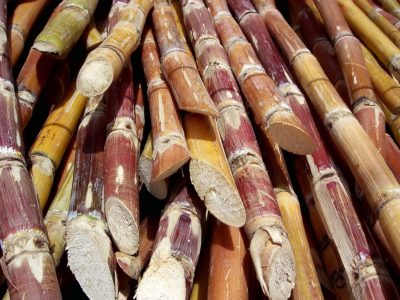The Difference Between Sugar and Cane: Understanding the Basics
The Difference Between Sugar and Cane: Understanding the Basics
Blog Article
How Walking Stick Sugar Handling Chemicals Improve Sugar Top Quality and Return
The function of processing chemicals in walking stick sugar production is essential, as they straight influence both the quality and return of the last product. The consolidation of triggered carbon and enzymes serves to enhance the malfunction of complex sugars, eventually leading to a purer and higher-quality sugar.
Overview of Cane Sugar Processing
Walking stick sugar handling includes a collection of important actions that change raw sugarcane right into refined sugar products. The procedure begins with harvesting, where fully grown sugarcane stalks are reduced and moved to processing facilities. Upon arrival, the walking cane goes through cleaning to eliminate pollutants such as soil and plant products.
Adhering to washing, the walking stick is crushed to draw out the juice, which includes sucrose - sugar and cane. This juice goes through explanation, where lime and heat are made use of to get rid of remaining impurities and non-sugar components. The made clear juice is then evaporated to focus the sugar web content, bring about the formation of thick syrup
Next, the syrup is crystallized through a controlled cooling process, resulting in sugar crystals. These crystals are divided from the remaining syrup in centrifuges. The raw sugar obtained is typically brownish due to recurring molasses web content. To achieve refined sugar, further filtration actions are used, including cleaning, re-crystallization, and drying.
The final product is either packaged as raw sugar or even more refined right into white sugar, providing to various customer and commercial requirements. This detailed series of actions makes certain the production of top notch sugar, crucial for many applications in food and drink sectors.
Trick Handling Chemicals Utilized
The production of polished walking stick sugar counts on various processing chemicals that play significant duties at different phases. This action is crucial for boosting the overall quality of the removed juice.
Phosphoric acid offers a double function; it improves the explanation process and helps in the elimination of color-forming substances, adding to a greater purity of the final product. Furthermore, sulfur dioxide functions as a lightening agent, allowing for the reliable removal of undesirable pigments and improving the color of the sugar.
Various other notable chemicals include turned on carbon, which is utilized for additional decolorization, and enzymes that help with the breakdown of complex sugars right into less complex kinds, therefore enhancing return. The cautious selection and application of these handling chemicals are vital for enhancing the effectiveness of sugar extraction and refining processes, eventually bring about a more regular and higher quality sugar product.

Effect On Sugar Quality
Just how do processing chemicals influence the top quality of polished sugar? The intro of various chemicals in the cane sugar processing phase significantly improves the purity and total high quality of the last product.
Furthermore, using turned on carbon and ion-exchange materials during the refining process plays an important basics function in eliminating off-flavors and unwanted odors, adding to the sugar's sensory profile. This refinement not only raises the organoleptic and aesthetic qualities but additionally boosts the life span by decreasing microbial activity connected with impurities.
On top of that, the specific application of these chemicals makes certain that the sugar shows a consistent grain size and flowability, which are vital characteristics for both industrial applications and consumer choices. Overall, the critical use processing chemicals is fundamental in achieving premium refined sugar that meets sector standards and customer expectations.

Enhancing Return Efficiency
Enhancing return efficiency in walking cane sugar handling involves optimizing numerous phases of manufacturing to optimize the amount of sugar removed from raw cane. One essential aspect is the selection and application of suitable handling chemicals, which can promote the breakdown of cell wall surfaces and improve sugar release throughout extraction. Chemicals such as acids learn this here now and enzymes play a crucial role in this procedure by hydrolyzing polysaccharides and dissolving pollutants, consequently enhancing the total removal effectiveness.

Normal surveillance and modification of processing parameters are important to preserve performance throughout manufacturing (sugar and cane). By employing these strategies, sugar manufacturers can not just increase the quantity of sugar acquired but likewise minimize waste and lower production costs, adding to a more successful and lasting sugar processing procedure
Advantages for Consumers and manufacturers
Walking stick sugar handling chemicals offer significant benefits for both customers and producers, producing a much more sustainable and reliable industry. For producers, these chemicals improve extraction procedures, leading to higher returns and enhanced sugar quality. By maximizing the filtration and condensation phases, they lower waste and increase total productivity, which can substantially decrease production expenses. This efficiency enables producers to remain affordable in an international market defined by fluctuating prices and need.
For customers, the benefits are just as compelling. The better high quality of sugar translates to far better taste and uniformity in foodstuff. In addition, making use of handling chemicals can lead to an extra stable supply of sugar, alleviating scarcities and rate spikes that can take place as a result of environmental elements or market changes. The developments in production methods contribute to sustainability initiatives by lessening resource usage and waste generation, appealing to eco aware customers.
Verdict

The duty of handling chemicals in walking stick sugar production is critical, as they straight affect both the high quality and return of the last product (sugar and cane). The incorporation of activated carbon and enzymes serves to optimize the malfunction see this page of complicated sugars, eventually leading to a purer and higher-quality sugar.Walking cane sugar handling involves a series of vital actions that change raw sugarcane right into refined sugar products.Enhancing return performance in cane sugar processing includes optimizing numerous phases of manufacturing to take full advantage of the amount of sugar drawn out from raw walking cane.Cane sugar handling chemicals play a critical role in improving both sugar high quality and yield
Report this page